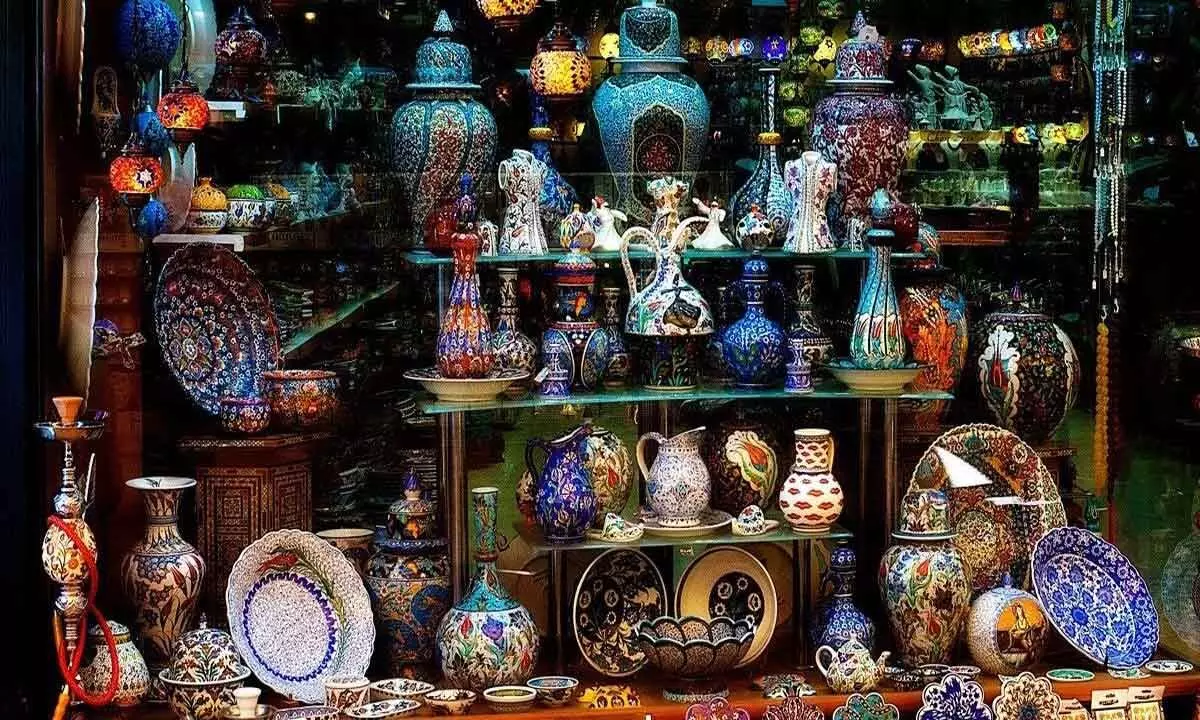The luxurious artistry of Indian handicrafts remains timeless, priceless
The 32% luxury taxation rate in India is driving away consumers
image for illustrative purpose

Ethnic weaves and crafts like chintz and calicos were so deeply adored in France during Louis XIV’s reign that in 1686 the government resolved to ban import of Indian textiles to France to save their own textile market. The forbidden nature of these weaves made them more exclusive, making them the trend of the upper class and nobility
From being a marginalised handicraft market, India has grown to become one of the top luxury handicrafts destinations in the world. Today, the handicrafts industry plays a key role in the country’s decentralised economy and offers employment to millions of artisans.
The handicraft industry plays a key role in the economic uplift of the weaker sections of society, especially women.
The government’s development commissioner for handicrafts says that approximately seven million people are employed in handicraft making, of which 56% are women. Besides, it appears that 52% of them workers belong to the OBC (other backward classes) category, which means it is a vital source of livelihood for the society’s vulnerable sections. Even more crucial is that what they produce accounts for a significant part of exports and earns valuable foreign income besides being admired for the rare and exotic beauty. Indian exports of handicrafts in 2022-23 were lower by 20% over the previous year, coming in at $ 3.58 billion.
Taxation has forever been the biggest problem for many luxury brands as consumers prefer buying internationally due to the complex tax structure and exorbitant prices. The luxury taxation rate in India is 32%, which makes all products expensive and drives consumers away, therefore, making it difficult for luxury brands to navigate the financial situation in India.
Craftspeople represent essential touch points in the creation process of luxury experience. The industry faces increasing difficulties in attracting new craftspeople.
Narrative interviews with craftspeople and expert interviews with executives and stakeholders reveal that managers recognize the importance of craftsmanship for consumers’ luxury experience. They use craftsmanship as abstract communication content instead of recognizing craftspeople as human beings that contribute to brand experience. Low regard for craftsmanship and a lack of knowledge about the work of luxury craftspeople are the main barriers for selecting this occupation. Direct experience of craftspeople at work and passion for creative activities are major drivers. Luxury marketing and human resource managers should cooperate in aligning customer experience management with employer branding to inspire consumers and potential craftspeople.
Since the 1980s, luxury brands that we view as leaders of the global fashion industry—from Dior, Chanel, and Gucci to Versace, Hermes, and Saint Laurent—have popularly relied on India’s unparalleled craftsmanship and cost-effective labour for some of their most elaborately crafted collections.
But this relationship between European luxury and Indian craftsmanship dates further back. There have been many records through the course of time showing Indian craft being immensely sought after in the West.
Ethnic weaves and crafts like chintz and calicos were so deeply adored in France during Louis XIV’s reign, being used in everything from petticoats to curtains that in 1686 the King’s government resolved to ban import of Indian textiles to France to save their own textile market. The forbidden nature of these weaves made them more exclusive, making them the trend of the upper class and nobility.
As an investment, luxury craft is a valuable asset to add to any home or interior. There is longevity in this type of craft, where an item is made bespoke to your needs. The focus is always on quality materials that are long lasting. Any creation can be a legacy piece that maintains its intrinsic value for a long time to come.
The future of India's luxury landscape is dependent on the preservation of traditional crafts and the empowerment of women artisans. By supporting organisations like Chanakya School of Craft, the luxury industry can contribute to the economic empowerment of women and preservation of traditional crafts.
This, in turn, can lead to a more sustainable and diverse luxury landscape that values the cultural heritage of India while also embracing innovation and creativity. Additionally, by integrating traditional crafts into luxury products, the industry can create unique and exclusive products that cater to the discerning tastes of global consumers.
The fashion industry frequently seeks inspiration from traditional and artisanal skills, and the inclusion of Indian handicrafts in a high-profile fashion show may draw attention to the ability and creativity of our craftsmen and their crafts. The incorporation of Indian handicrafts in a Dior show may stimulate demand for these items, both domestically and globally.
This increasing demand may create job opportunities for local craftsmen and help the expansion of the country’s handcrafting sector. Indians, who are distorted from their cultural roots, may seek this as a chance to associate Indian handicrafts with luxury, which can help preserve traditional crafts and techniques while also introducing them to new audiences as well.

